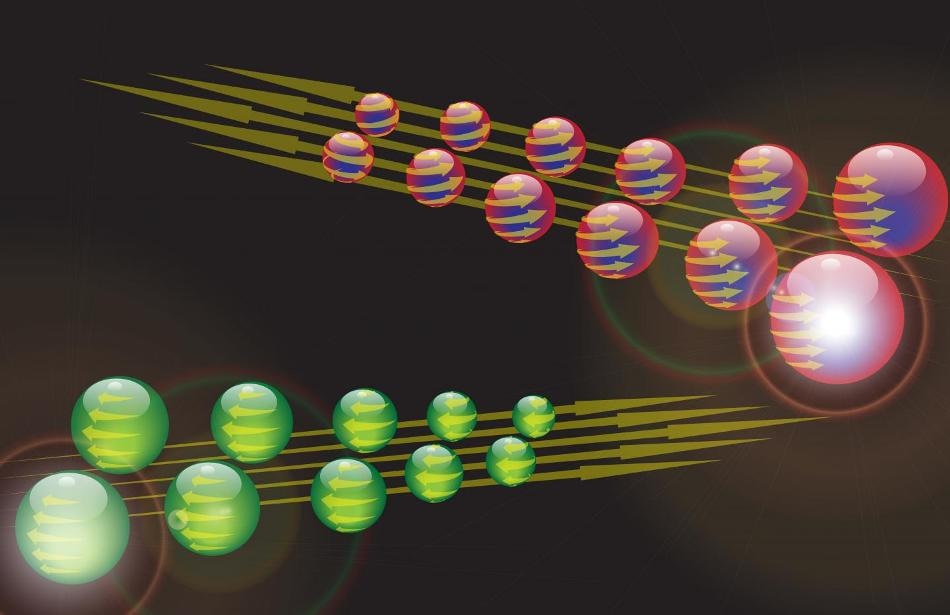Apr 18 2018
A team of researchers has demonstrated that particular superconductors – materials that carry electrical current with zero resistance at extremely low temperatures – can also carry currents of ‘spin’. The successful combination of superconductivity and spin could result in a revolution in high-performance computing, by greatly minimizing energy consumption.
 This is a conceptual image of spin current flow in a superconductor. (Image credit: Jason Robinson)
This is a conceptual image of spin current flow in a superconductor. (Image credit: Jason Robinson)
Spin is a particle’s inherent angular momentum and is usually carried in non-superconducting, non-magnetic materials by separate electrons. Spin can be ‘up’ or ‘down’, and for any particular material, there is a maximum length that spin can be carried. In a conventional superconductor electrons where opposite spins are paired together so that a flow of electrons carries zero spin.
A couple of years ago, scientists from the University of Cambridge revealed that it was possible to develop electron pairs where the spins are aligned: up-up or down-down. The spin current can be carried by up-up and down-down pairs moving in opposite directions with a net charge current of zero. The ability to create such a pure spin supercurrent is a crucial step towards the team’s vision of developing a superconducting computing technology which could use massively less energy than the current silicon-based electronics.
Presently, the same team has discovered a set of materials that encourage the pairing of spin-aligned electrons, so that a spin current flows more efficiently in the superconducting state than in the non-superconducting (normal) state. Their results have been published in the Nature Materials journal.
Although some aspects of normal state spin electronics, or spintronics, are more efficient than standard semiconductor electronics, their large-scale application has been prevented because the large charge currents required to generate spin currents waste too much energy. A fully-superconducting method of generating and controlling spin currents offers a way to improve on this.
Professor Mark Blamire, Lead Researcher - Cambridge’s Department of Materials Science & Metallurgy
In the present work, Blamire and his collaborators used a multi-layered stack of metal films in which each layer was just a few nanometers thick. They noticed that when a microwave field was applied to the films, it caused the core magnetic layer to release a spin current into the superconductor next to it.
If we used only a superconductor, the spin current is blocked once the system is cooled below the temperature when it becomes a superconductor. The surprising result was that when we added a platinum layer to the superconductor, the spin current in the superconducting state was greater than in the normal state.
Professor Mark Blamire, Lead Researcher - Cambridge’s Department of Materials Science & Metallurgy
Although the team has demonstrated that specific superconductors can carry spin currents, so far these only take place across short distances. The subsequent step for the research team is to comprehend how to increase the distance and how to regulate the spin currents.
The study was financed by the Engineering and Physical Sciences Research Council (EPSRC).